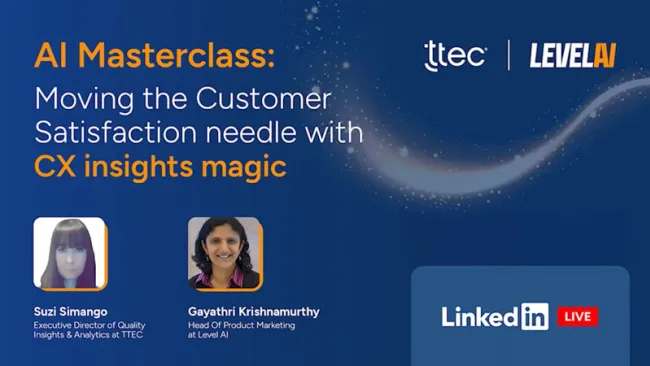Marketing is undergoing a radical transformation. Today’s cross-channel customer is creating new challenges – and opportunities – for marketers to engage with consumers who are constantly shifting between digital and offline channels.
Cutting-edge technological developments, such as cross-device identification, addressable TV, integrated sales and marketing platforms, and advanced marketing analytics, enable marketers to engage with consumers in the channels they frequent and deliver more contextually engaging, personalized experiences.
Technological innovation also allows marketers to address customer needs and preferences in new and exciting ways. For instance, advanced marketing analytics tools can help marketers identify customer trends and insights about individual customers that might otherwise go undetected. These types of capabilities are profound, as marketers are often trapped by their worldview of how they define their audiences. Marketers need to allow the data to tell them what’s happening versus their preconceived notions of what they want to discover or what they think should be happening with customer behaviors.
Progressive marketers are beginning to leverage emerging technologies to help them connect with customers more effectively. For instance, one of the more innovative technological developments for marketers is addressable TV. With addressable TV, marketers can pinpoint target audiences in their homes on their televisions based on income, household size, mobile contracts, and other information. Industry experts expect this to become an extraordinary opportunity for marketers to deliver tailored messaging to target audiences. Today, addressable TV can currently be delivered to 42 million households, with more expected in the future.
Early returns reveal that addressable TV is extremely effective: Households receiving addressable TV advertising tuned out 38 percent less often than those receiving non-addressable advertising, according to research conducted by Comcast Spotlight, SMG, and Kantar Media.
Identifying the cross-channel customer
Meanwhile, as consumers continue to increase their use of digital touchpoints, their tendency to channel hop has made it difficult for marketers to match customers and prospects across the various devices they use. For instance, when a customer uses a smartphone, a marketer may be able to identify them if they’re using a mobile app but it can be more difficult to identify them if a customer is using a mobile website due to differences in the way that mobile browsers do, or don’t, support cookies.
However, advances in cross-device identification technologies now enable marketers to accurately link customers to any device they might be using, thus providing marketers with a more unified view of a customer during their journey by connecting customer identities across devices. These capabilities are making it possible for marketers to shift from delivering device-specific experiences to a more unified experience which embraces the full scope of a customer’s behaviors across the web, mobile, email, etc.
Cross-device identification will grow in importance as consumers increase their adoption of wearables and other connected devices. According to Forrester, U.S. consumers used 3.3 million connected devices in 2014 and that’s just the tip of the iceberg when it comes to wearables. Moreover, cross-device identification also provides marketers with greater retargeting opportunities.
True sales and marketing alignment
For years, industry professionals have emphasized the need for sales and marketing to work more closely together in order to meet the company’s growth objectives. Sadly, operational silos and discrete goals have made it difficult to achieve alignment and meet enterprise objectives.
But now, integrated sales and marketing platforms are available that can extract contextual data from a customer’s search, display, social, mobile, and even offline interactions. Sales associates can then use these insights to connect with the right customer at the right time with the right messaging through his or her preferred channel. Meanwhile, sales data can be sent back to marketing to refine messaging to customers under a system that continually refines itself.
Innovative improvements in marketing analytics, including the use of machine learning, are providing marketers with deeper insights about customers and prospects. Promising technologies in this space include analytics that can predict which B2B prospects are most likely to be interested in a company’s services as well as analytics that can predict what a customer will want even before that customer is aware of it.
Machine learning represents another progressive method of data analysis that’s able to find patterns in data which people typically aren’t able to spot on their own. One of the greatest opportunities that machine learning offers to marketers is that as additional data and results are fed into the system, the algorithm “learns” and improves from experience. This enables marketers to provide customers with the most optimal messaging or the best offer.
For example, say a customer uses his smartphone to search for information about ski equipment with a sporting goods retailer. Mobile analytics tools used by the retailer can identify that he is a high-value customer. Meanwhile, machine learning can be used to generate an offer that the customer is most likely to respond to, based on the customer’s previous purchases, the conversion rates of customers with similar characteristics who received comparable offers, and other criteria.
Marketers are entering a new domain where they need to adapt to changing customer behaviors and preferences and meet customers on their terms. To accomplish this, marketers need to recognize how advanced marketing technologies such as addressable TV, cross-device identification, advanced analytics, and machine learning can help them better identify and understand what customers want and enable them to deliver tailored experiences that can differentiate the brand.
Interested in learning more about this topic? Download the eBook, The Rise of the Technology-Enabled Marketer, here.
The Advent of the Technology-Enabled Marketer















